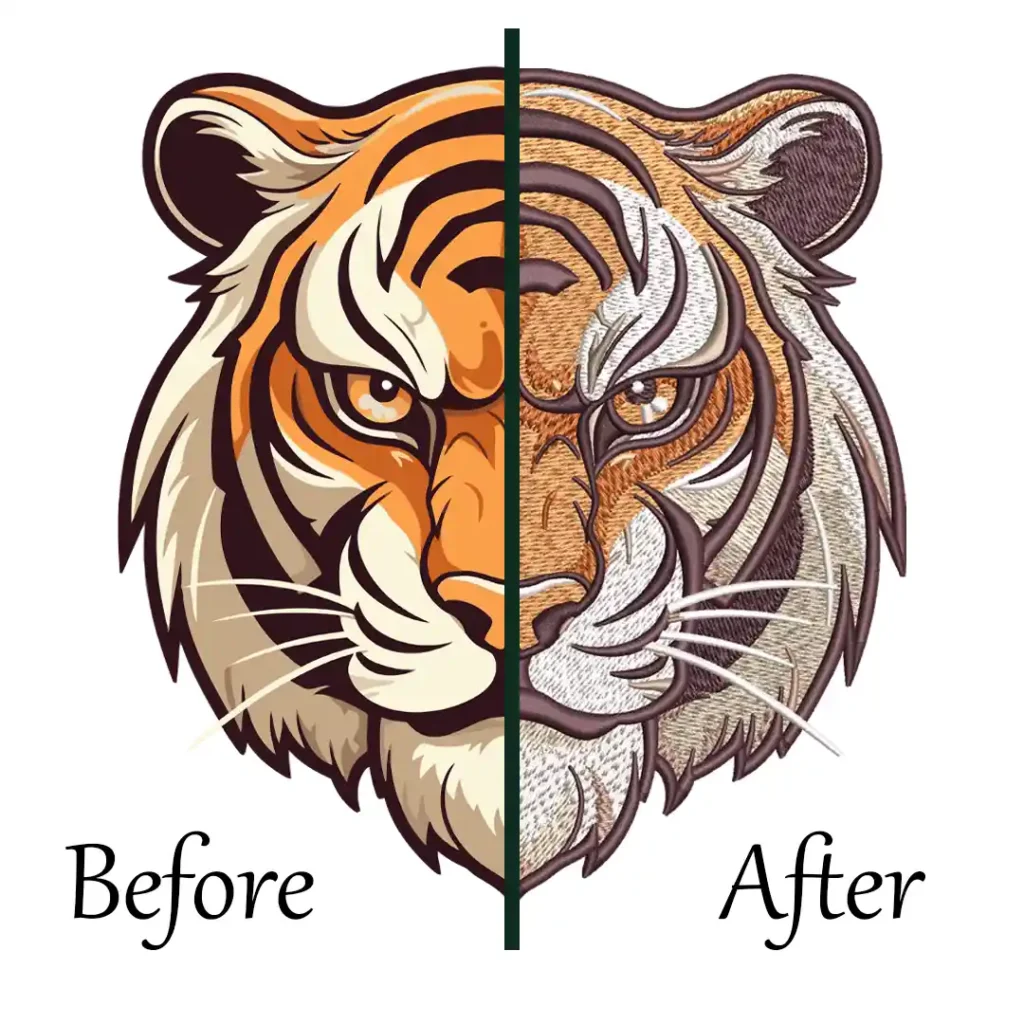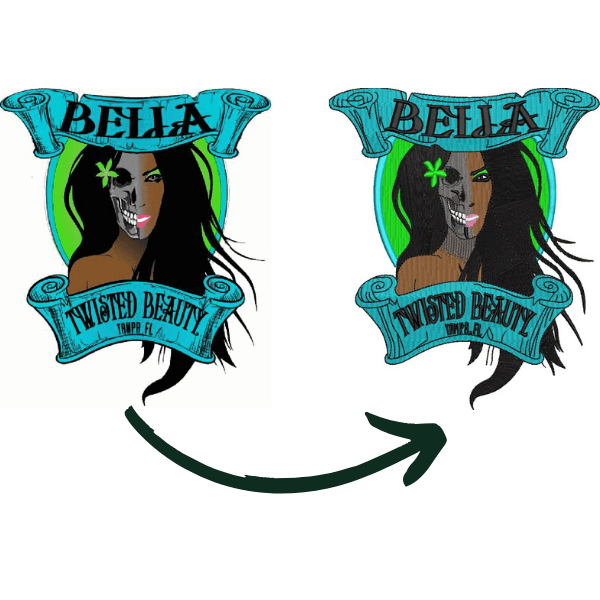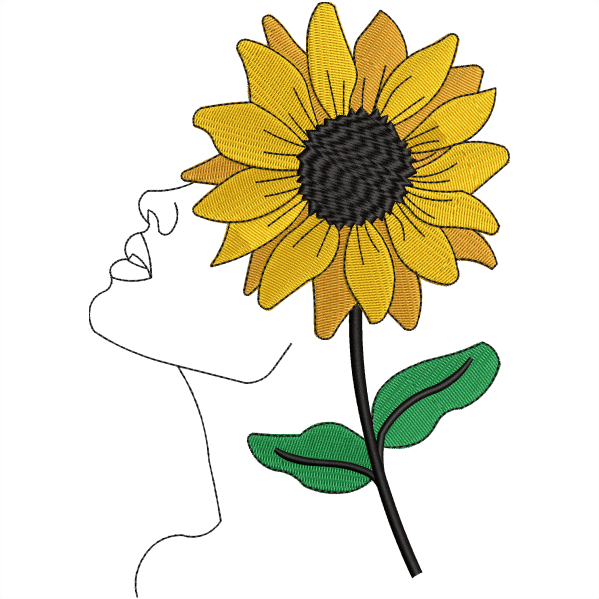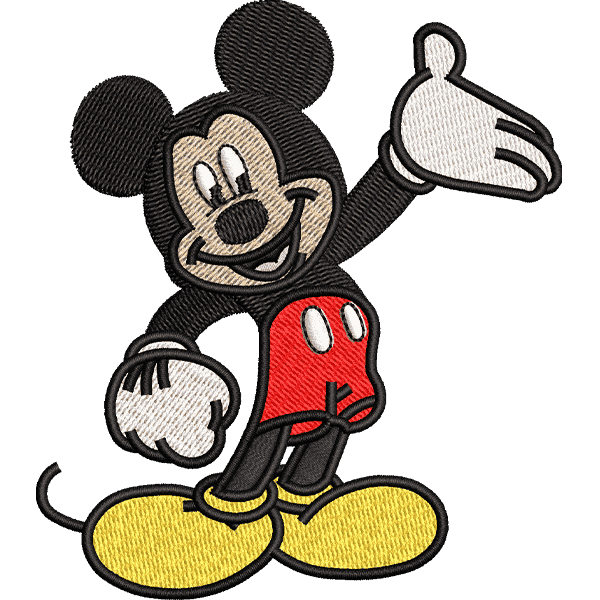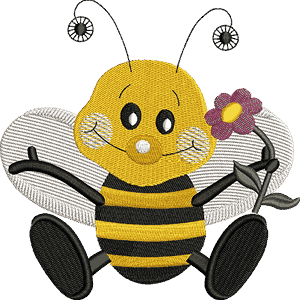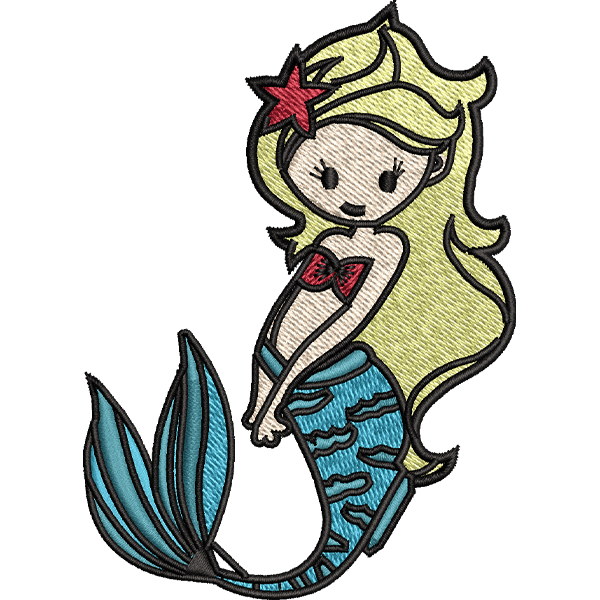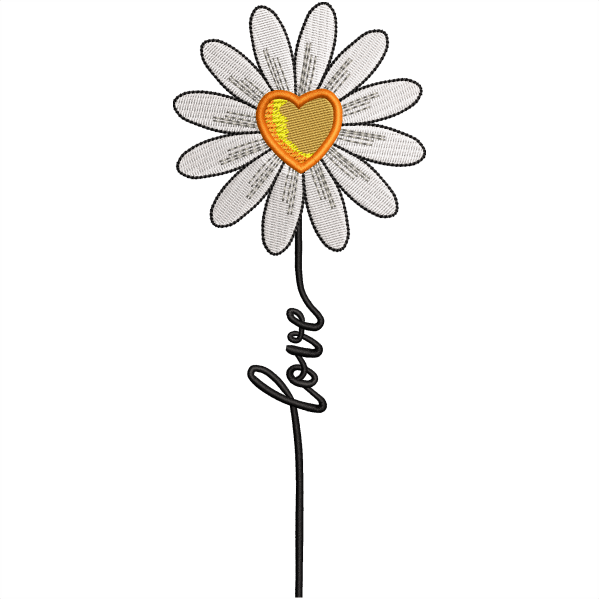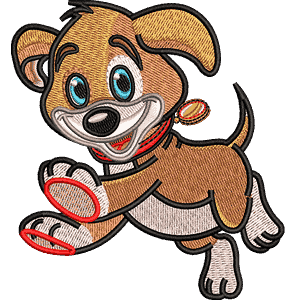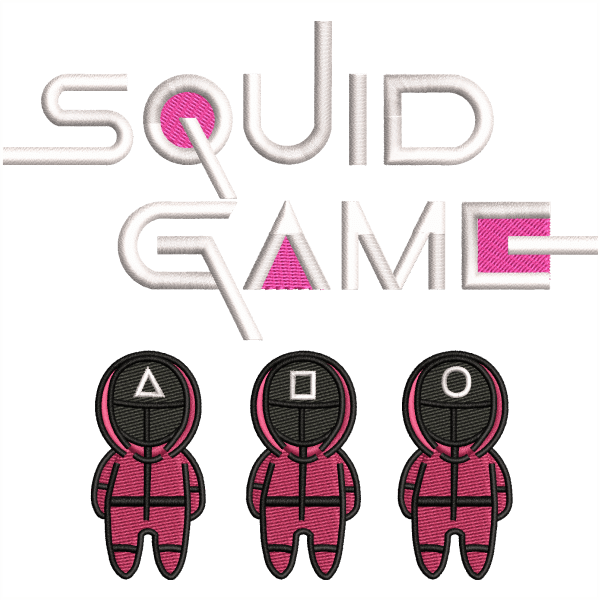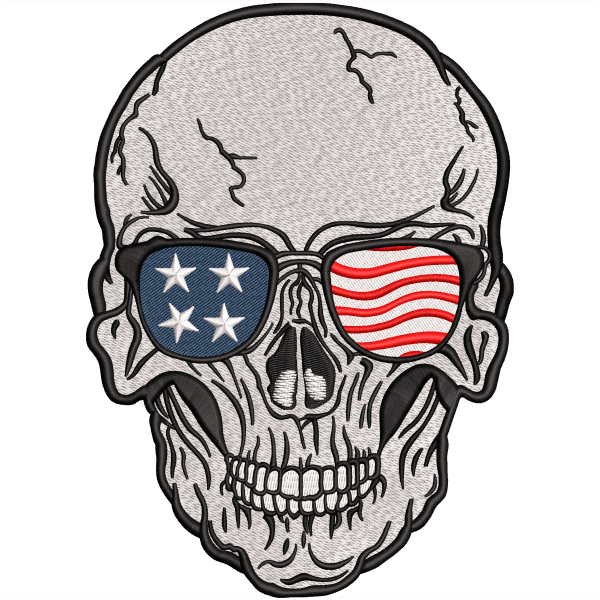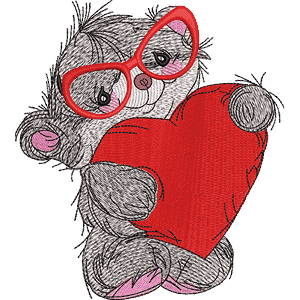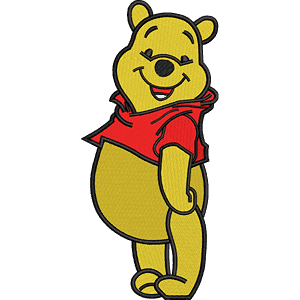Are you wondering which method is best for converting your designs: manual vectorization vs auto-tracing? Both options have their strengths, but choosing the right one depends on your project.
If you need high precision and custom details, manual tracing gives you full control over every part of your design. However, if you’re looking for a quick and budget-friendly solution, automated tracing can handle simple designs efficiently.
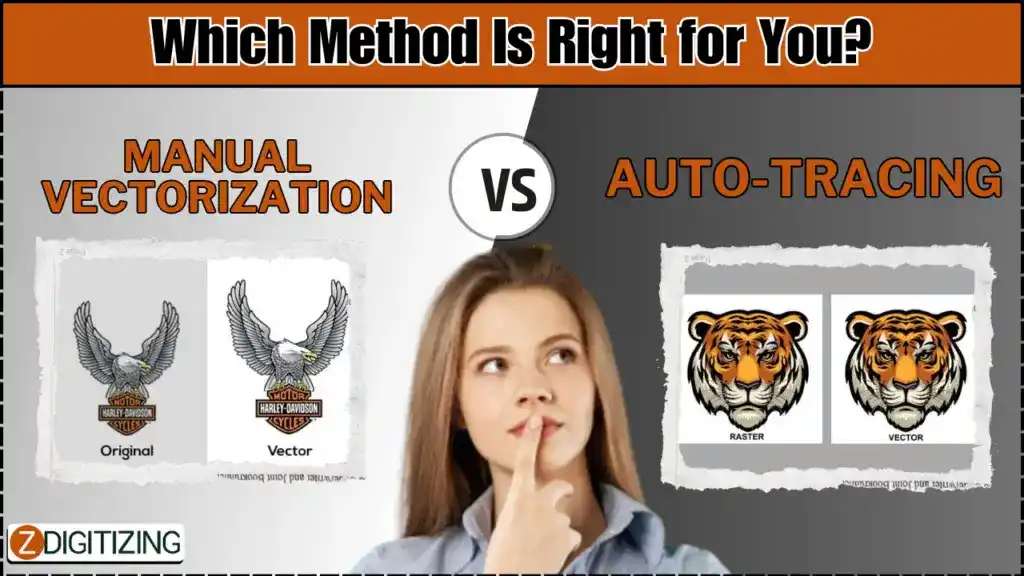
In this article, we’ll explore when to use each method so you can make the best decision for your needs. Let’s dive into the differences and help you choose the right option!
Manual Vectorization vs Auto-Tracing
What is Vectorization?
Vectorization is the process of converting raster images, which are made up of pixels, into vector graphics that are defined by mathematical equations, such as lines, curves, and shapes.
Unlike raster images, vector graphics are scalable to any size without losing quality, making them ideal for logos, illustrations, and other designs that need to be resized for different applications.
Embroidery Digitizing & Vector Art Services
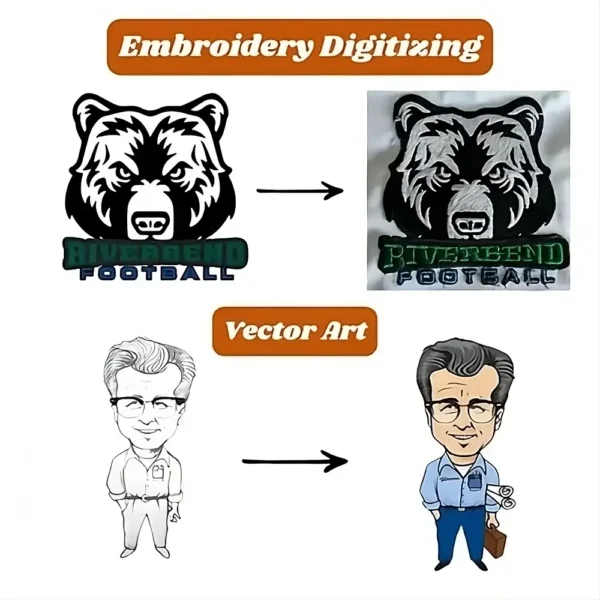
Looking for embroidery digitizing and vector art services that are affordable and reliable? We offer fast turnaround time, guaranteed quality, and the option to preview your design before payment, we make sure you get exactly what you need. Your satisfaction is our top priority, and we’re dedicated to delivering the best results. Don’t wait—try ZDigitizing today and see the difference in quality and service!
Embroidery Digitizing & Vector Art Services
Looking for embroidery digitizing and vector art services that are affordable and reliable? We offer fast turnaround time, guaranteed quality, and the option to preview your design before payment, we make sure you get exactly what you need. Your satisfaction is our top priority, and we’re dedicated to delivering the best results. Don’t wait—try ZDigitizing today and see the difference in quality and service!
What is Manual Vectorization?
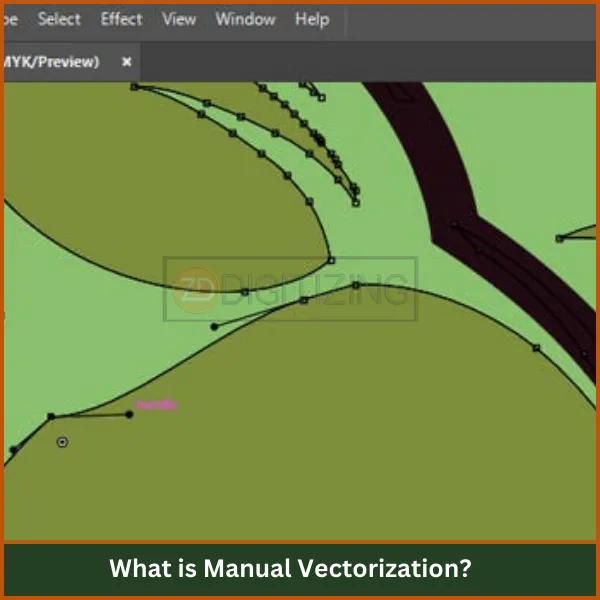
It is often referred to as vector tracing, which is the process of converting raster images into vector format by hand, using a specialized vectorization program or software.
In this method, a designer manually redraws the image, carefully adjusting curves, lines, and shapes to ensure precision and accuracy.
Unlike automatic tools, manual vector tracing allows for a higher level of control, making it ideal for complex or detailed designs that require close attention to every element.
Benefits and Challenges of Manual Vectorization
Benefits | Challenges |
|
|
What is Auto-Tracing?
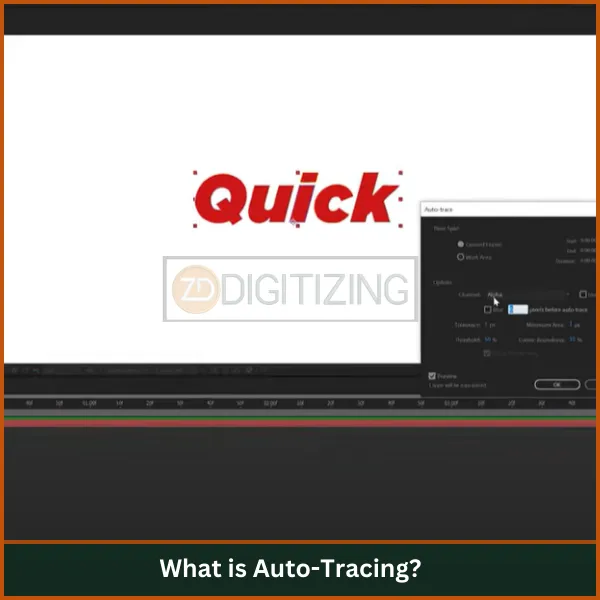
It is the process of automatically converting raster images into vector graphics using vector software. This method relies on algorithms within the software to trace the outlines, shapes, and details of the image, transforming it into a vector format.
Auto-tracing tools are widely used in various vector applications for fast conversions, especially when precision is not the top priority. While it is less accurate than the manual method, it is faster and more efficient for simple designs or bulk processing.
Benefits and Challenges of Auto-Tracing
Benefits | Challenges |
|
|
Remember: Auto vector tracing requires expensive software, and manual work can also be costly. However, if you choose our services, we offer budget-friendly manual vector art services with a fast turnaround time. We manually convert your design into vector art and guarantee the best results.
Key Differences Between Manual Vectorization vs Auto-Tracing
Now, we will discuss the key aspects that differentiate manual image tracing from auto-tracing, focusing on their unique features and use cases.
- Precision
- Speed
- Cost
- Customization
- Skill Requirement
- Control Over Output
- Image Complexity Handling
- Consistency of Results
1. Precision
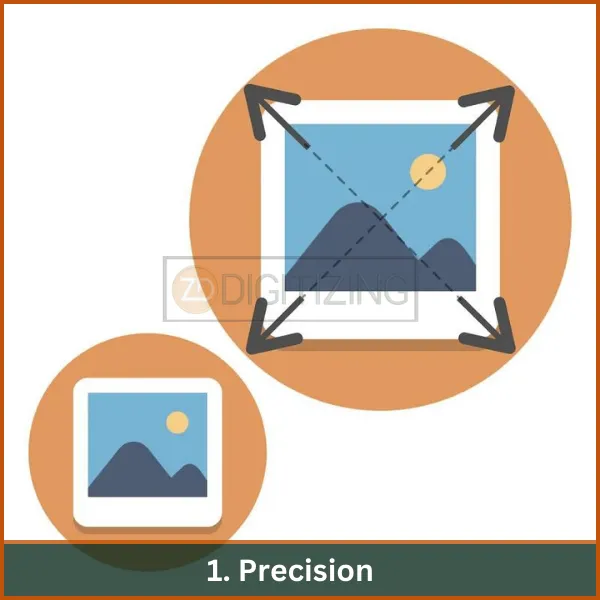
Manual image tracing offers superior precision compared to auto-tracing. When a designer performs manual vector tracing using a vectorization program, they can capture even the smallest details, ensuring high-quality and accurate output. This level of precision is crucial for complex designs like logos or intricate patterns. In contrast, auto-tracing uses algorithms to convert images into vector format, which can sometimes miss fine details, resulting in less accurate representations.
Manual vector art is ideal for projects where perfection is a priority, such as professional design work.
2. Speed
Auto-tracing is significantly faster than manual tracing. It can quickly process images and convert them into vector format, making it a time-saving solution for bulk projects or when you need fast results.
Manual vector tracing, however, is more time-consuming because a skilled designer carefully traces each element of the image. While auto-tracing can convert simple images in seconds, manual work might take hours, depending on the complexity.
If you’re working on a large project with tight deadlines, auto-tracing offers an efficient option, especially for less detailed designs.
3. Cost
Auto-tracing is more cost-effective, particularly for businesses with bulk vector needs, like those in the printing machine industry. The process requires minimal manual intervention, reducing labor costs.
Many businesses use auto-tracing to save money on design services, especially for straightforward jobs. However, for high-quality output, vector art services that use manual image tracing may come at a higher price due to the time and expertise involved.
Custom designs that demand precision and detail often justify the additional cost, as manual vectorization ensures a superior end product.
4. Customization
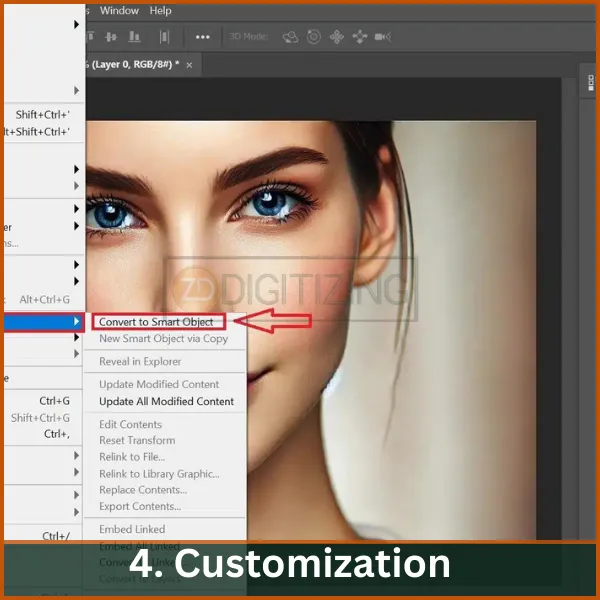
Manual vector conversion provides a higher level of customization. Designers can adjust the image according to specific project needs, whether it’s adjusting a logo for embroidery or creating detailed illustrations for print.
Manual adjustments allow for tailored outcomes based on the client’s requirements. Auto-tracing, on the other hand, offers limited customization.
The software may not interpret every detail correctly, which could lead to additional manual editing after the auto-trace is completed. If you need highly specific alterations, manual tracing is the better option.
5. Skill Requirement
Manual vector services require a high level of skill and experience. Designers must be familiar with vector applications and the intricacies of design software to deliver precise and clean vector images.
This skill set allows them to handle complex projects, ensuring every aspect of the design is perfect. Auto-tracing, however, is designed for ease of use and requires little to no design expertise.
Anyone with access to vector software can use auto-tracing, making it an accessible option for those without design skills, though the output might not match the quality of manual work.
6. Control Over Output
With manual tracing, designers have complete control over the final output. Every curve, line, and detail can be refined to ensure the desired result is achieved. This is particularly important for high-end projects where precision is essential.
Auto-tracing, however, provides less control over the outcome. The software’s algorithm decides how the image is traced, which may lead to unsatisfactory results, especially for complex designs.
Manual image tracing is preferred when control over every aspect of the design is important.
7. Image Complexity Handling
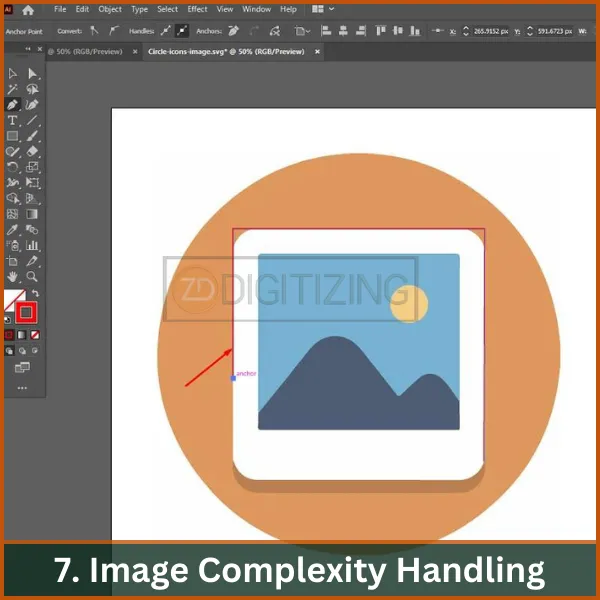
Manual vector conversion is the best option for handling complex images. Designers can meticulously trace even the most intricate patterns, making it ideal for detailed designs that require a high level of attention.
In contrast, auto-tracing struggles with complex images, often failing to capture intricate details properly. It is better suited for simple shapes and basic designs. If your project involves complicated logos or detailed artwork, manual method is the more reliable choice for maintaining quality and accuracy.
8. Consistency of Results
Manual vectorization delivers consistent, high-quality results across different projects. Since it is performed by a skilled designer, the outcome is more predictable and uniform, regardless of the image complexity. Auto-tracing, however, can produce inconsistent results.
The quality of the vector depends on the complexity of the original image and the limitations of the software. You may find that some images convert well while others require further editing.
For businesses or designers looking for uniformity across multiple projects, manual vector tracing is the more dependable option.
Quick Difference Between Manual Tracing vs Automated Tracing
Aspect | Manual Vectorization | Auto-Tracing |
Precision | High | Variable |
Speed | Slower (can take hours or days) | Fast (results in seconds to minutes) |
Cost | Higher (labor-intensive) | Lower (often free with software) |
Customization | High (extensive editing options) | Limited (difficult to edit post-conversion) |
Skill Required | High (requires expertise and artistic skill) | Low (basic software skills sufficient) |
Control Over Output | Full control over details and adjustments | Limited control over final output |
Image Complexity Handling | Handles complex images well | Struggles with complex details |
Consistency of Results | Variable (depends on artist’s skill) | Generally consistent (automated process) |
Best Situations to Choose Manual Vectorization vs Auto-Tracing
Explore the situations where the manual method is preferred and when automated tracing becomes the more efficient choice, depending on the project requirements.
When to Use Manual Vectorization:
- Best for projects that require high precision and detailed work.
- Ideal for complex designs like logos or artwork with fine details.
- Suitable when you need full control over the design and want to make custom adjustments.
- Perfect for professional projects where quality is more important than speed.
- Recommended when working on high-end designs that need perfection.
When to Use Auto-Tracing:
- Great for simple designs that don’t require much detail.
- Useful when you need quick results or are working on a tight deadline.
- Ideal for bulk work, where you need to convert many images at once.
- Suitable for projects where speed and budget are more important than high accuracy.
- Works well with basic shapes and easy designs.
Embroidery Digitizing & Vector Art Services

Looking for embroidery digitizing and vector art services that are affordable and reliable? We offer fast turnaround time, guaranteed quality, and the option to preview your design before payment, we make sure you get exactly what you need. Your satisfaction is our top priority, and we’re dedicated to delivering the best results. Don’t wait—try ZDigitizing today and see the difference in quality and service!
Embroidery Digitizing & Vector Art Services
Looking for embroidery digitizing and vector art services that are affordable and reliable? We offer fast turnaround time, guaranteed quality, and the option to preview your design before payment, we make sure you get exactly what you need. Your satisfaction is our top priority, and we’re dedicated to delivering the best results. Don’t wait—try ZDigitizing today and see the difference in quality and service!
Conclusion: Manual Vectorization or Auto-Tracing?
Choosing between manual and auto image tracing depends on what you value most in your project. If you need fast results for simple designs, auto-tracing can get the job done.
But when it comes to complex designs that need fine detail, precision, and full customization, manual tracing n is the way to go.
At ZDigitizing, we don’t just offer vector conversions – we provide manual vector art services at the most affordable rate possible that ensures your designs come out exactly how you envision them, with every detail captured perfectly.
By using our service, you can be confident that your design will be ready for any application, whether it’s printing, embroidery, or other uses. And for first-time clients, we’re offering a 50% discount on your first order.
Don’t settle for less when you can have perfection – let our expert team handle your design with care and precision. Reach out today to get started!
FAQs
Adobe Illustrator is the industry standard for vectorizing graphics. However, there are free alternatives like Inkscape that may be used for simpler projects.
Adobe Illustrator is the ideal program for transforming raster images into vector ones due to its powerful vectorization capabilities and adaptability. Depending on what you’re looking for, you can also try CorelDRAW, Inkscape, or Vector.
You can vectorize an image with programs like Adobe Illustrator or CorelDRAW, or with free alternatives like Inkscape. These applications help you trace and transform raster images into vector graphics, which may be scaled and modified easily.
Automatic or vector tracing software converts pixel-based raster images into vector drawings. This method creates high-quality, scalable vector pictures for simple scaling and editing.
Different types of tracing include vector tracing, which converts raster images into scalable vectors, and image tracing, which converts sketches or photographs into digital images with editable paths.

